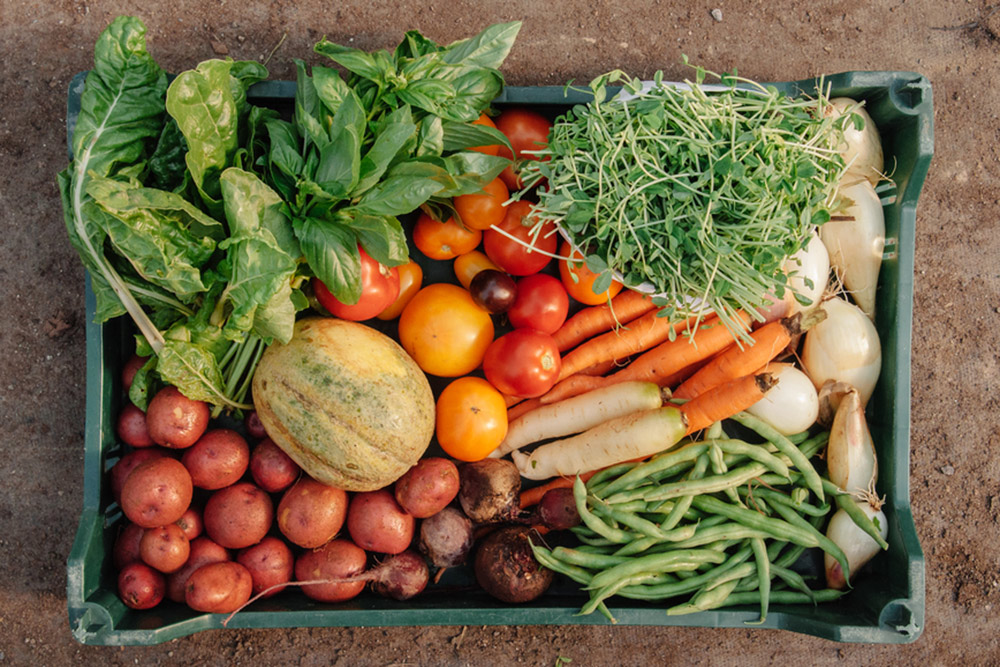This post originally appeared on LearnVest.
My wife, Susan, and I have always loved healthy food, especially the fresh, vine-ripened kind — which is why we routinely spent upwards of $400 a week scouting organic grocers for the tastiest produce.
But it wasn’t until we accepted a dinner invitation from our friend Eliza — a master naturalist who grows all of her own food — that we realized just how amazing organic eating could really be.
As Eliza gave us a tour of her garden, Susan and I spotted these odd little husked fruits called ground cherries under a small shrub. Once we tasted them we were blown away by their delicious, pineapple-citrus flavor.
That’s when Eliza told us about the secret world of wacky and unusual heirloom foods most people don’t know about — unless you grow them yourself.
The makings of our own “food forest”
When we bought a house the following year on a three-quarter-acre lot in Greenville, SC, Susan was excited to try our hand at gardening, just like Eliza.
I wasn’t quite as gung-ho — I was more worried about fitting in with the neighbors — but Susan insisted.
So we agreed to start by turning the far backyard, bordering a quarter-acre of forest, into a food growing space.
Not wanting to spend too much on the setup, we got scrappy: When a developer in the area was discarding some stones near a construction site, we used them to make raised soil beds. We spent only a few bucks for each packet of organic, heirloom seeds. And since we were starting with a small space, we kept it fairly basic, planting carrots, tomatoes, ground cherries, peppers, eggplant and squash.
As for best gardening practices — there’s an art to it! — Eliza shared all of her hard-won knowledge for successfully growing plants. (One of our favorites: To have the best yielding tomatoes, snap off all but the top leaf section on your seedlings, and then bury the stem in the soil up to about 2 inches below these leaves.)
It didn’t take long before we were hooked — and within three years, we’d turned a full half-acre of our property into our edible food forest. Today, we have fruit trees, nut trees, herbs, veggies, and even fungi that we’ve integrated into a beautiful landscape.
During the warm-weather months, we grow grapes, peaches, blackberries, blueberries, raspberries, potatoes, corn, tomatillos, and, of course, ground cherries. We also produce some more interesting varieties, like cape gooseberries, Native American corn in all colors, and garden huckleberries — which make for great pies.
In the colder months our production decreases a bit, but we still grow lettuce, kale, arugula, cilantro, spinach and carrots under hoop houses, which are light frames covered in plastic that we can build in a couple of minutes.
In an average year we harvest literally thousands of pounds of food. Squash alone yields hundreds per week in the summertime!
We also have five heritage breed ducks, which are better at producing eggs than chickens. If you’ve ever ordered crème brûlée at a high-end restaurant, you’ve probably eaten duck eggs — chefs prefer them for their rich flavor.
That’s part of what we love about our gardening hobby: We have access to fine-dining ingredients right in our backyard!
We began harvesting big savings
All in all, our homegrown foods cost about $300 to produce each year, which includes the cost of seed-starting materials and liquid fertilizer. And as perennial plants get bigger — berry bushes, fruit trees, asparagus, and sorrel — they require less care and produce more food.
Most of the produce sold in stores is generic and relatively bland, so to put a number on how much money we save is like comparing apples to oranges — no pun intended! But if we were to buy comparable food from an organic grocer, it would probably cost us $1,500 to $2,000 a month for the same quality, quantity, and variety of food.
That savings frees up money in our budget to spend on other foods we enjoy but don’t grow ourselves, such as high-quality meat that we get from local farmers for about $100 a month, as well as milk, cheese, and butter. We even purchase our coffee from a friend who has an organic microbrewery in Asheville.
You’re probably thinking that tending to this massive food forest would require a lot of work — but, surprisingly, we don’t have to do much to maintain it.
Want more? Check out the following articles from LearnVest:
Retirement Reality: Half of Americans Will Have a Lower Standard of Living
From 0 to 800: 3 Stories of People Who Rebuilt Their Bad Credit Stores
Money Mic: ‘I Live in a 200-Square-Foot House… So I Can Live Out My Dreams’


